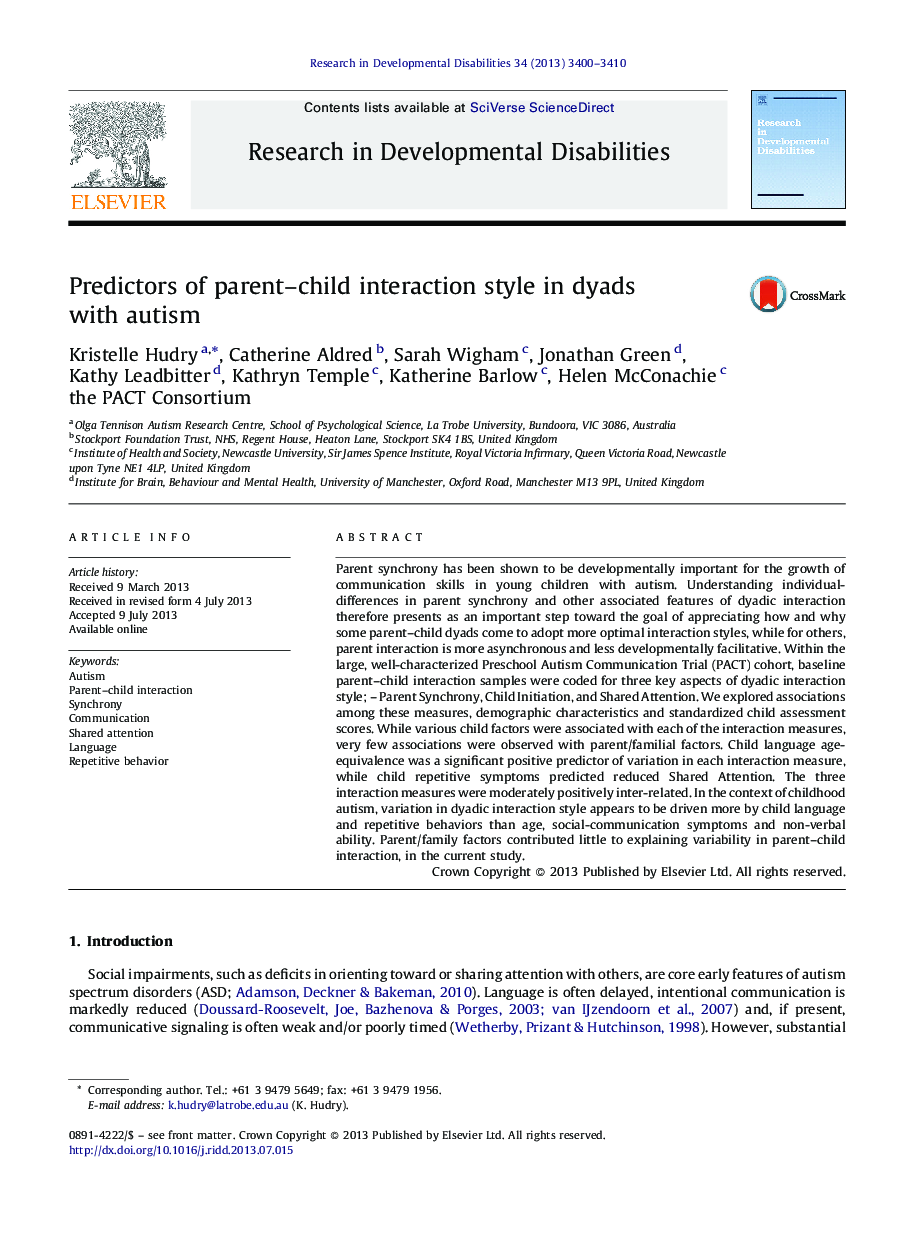| Article ID | Journal | Published Year | Pages | File Type |
|---|---|---|---|---|
| 10317915 | Research in Developmental Disabilities | 2013 | 11 Pages |
Abstract
Parent synchrony has been shown to be developmentally important for the growth of communication skills in young children with autism. Understanding individual-differences in parent synchrony and other associated features of dyadic interaction therefore presents as an important step toward the goal of appreciating how and why some parent-child dyads come to adopt more optimal interaction styles, while for others, parent interaction is more asynchronous and less developmentally facilitative. Within the large, well-characterized Preschool Autism Communication Trial (PACT) cohort, baseline parent-child interaction samples were coded for three key aspects of dyadic interaction style; - Parent Synchrony, Child Initiation, and Shared Attention. We explored associations among these measures, demographic characteristics and standardized child assessment scores. While various child factors were associated with each of the interaction measures, very few associations were observed with parent/familial factors. Child language age-equivalence was a significant positive predictor of variation in each interaction measure, while child repetitive symptoms predicted reduced Shared Attention. The three interaction measures were moderately positively inter-related. In the context of childhood autism, variation in dyadic interaction style appears to be driven more by child language and repetitive behaviors than age, social-communication symptoms and non-verbal ability. Parent/family factors contributed little to explaining variability in parent-child interaction, in the current study.
Keywords
Related Topics
Life Sciences
Neuroscience
Behavioral Neuroscience
Authors
Kristelle Hudry, Catherine Aldred, Sarah Wigham, Jonathan Green, Kathy Leadbitter, Kathryn Temple, Katherine Barlow, Helen McConachie, the PACT Consortium the PACT Consortium,
